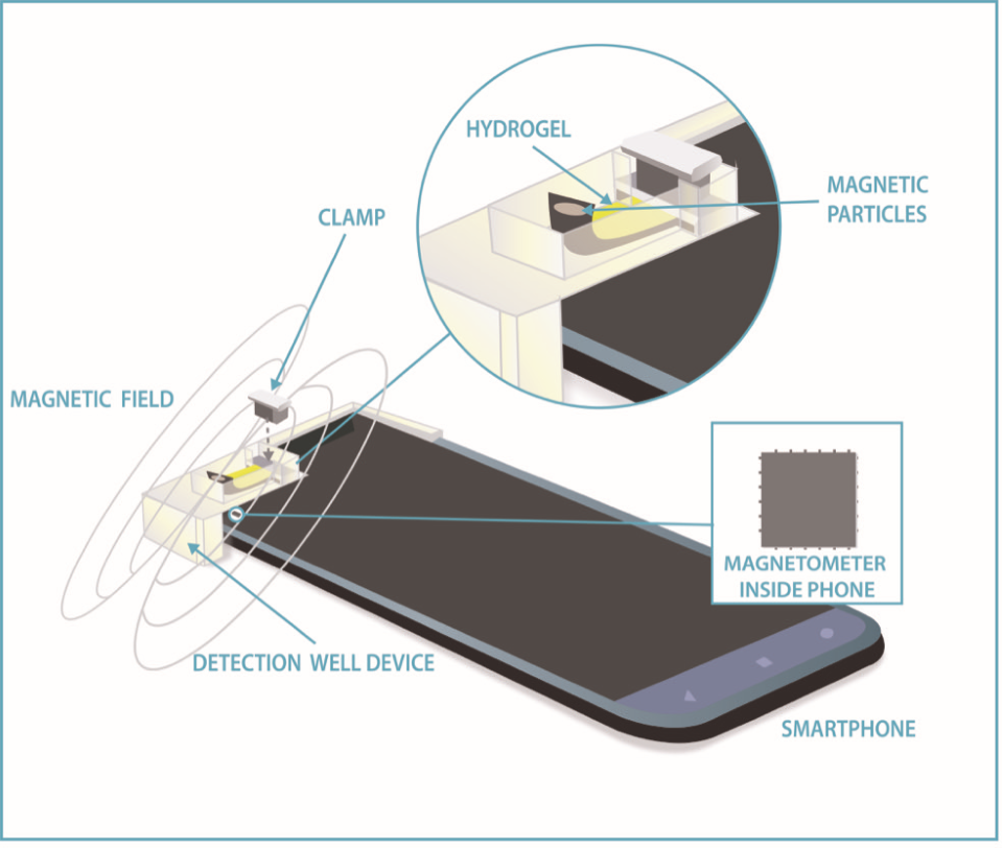This is the claim of researchers at the US National Institute of Standards and Technology (NIST), who said the same technique, which uses the magnetometer in conjunction with magnetic materials designed to change their shape in response to biological or environmental cues, could be used to measure other biomedical properties for monitoring or diagnosing human disease.
The method also has the potential to detect environmental toxins, said NIST scientist Gary Zabow.
In their proof-of-concept study, Zabow and fellow NIST researcher Mark Ferris attached a well containing the solution to be tested and a strip of hydrogel - a porous material that swells in water – to a smartphone.
The researchers embedded magnetic particles within the hydrogel, which they had engineered to react to the presence of glucose or to pH levels by expanding or contracting. Changing pH levels can be associated with a variety of biological disorders.

As the hydrogels enlarged or shrunk, they moved the magnetic particles closer to or farther from the smartphone’s magnetometer, which detected the corresponding changes in the strength of the magnetic field.
Employing this strategy, the researchers said they measured glucose concentrations as small as a few millionths of a mole. Such high sensitivity is not required for at-home monitoring of glucose levels using a drop of blood, but it might in the future enable routine testing for glucose in saliva, which contains a much smaller concentration of the sugar.
The team’s findings are detailed in Nature Communications.
Related content
Engineered hydrogels are inexpensive and relatively easy to fabricate, Ferris said, and can be tailored to react to a host of different compounds that medical researchers may want to measure.
In their experiments, Ferris and Zabow stacked single layers of two different hydrogels, each of which contracted and expanded at different rates in response to pH or glucose. These bilayers amplified the motion of the hydrogels, making it easier for the magnetometer to track changes in magnetic field strength.
Because the technique does not require any electronics or power source beyond that of the smartphone nor call for any special processing of the sample, it offers an inexpensive way to conduct testing.
Future efforts to improve the accuracy of such measurements using smartphone magnetometers might allow detection of DNA strands, specific proteins and histamines at concentrations as low as a few tens of nanomoles.
Measuring histamines, which are typically detected in urine at concentrations ranging from about 45 to 190 nanomoles, would ordinarily require a 24-hour urine collection and laboratory analysis.
“An at-home test using a smartphone magnetometer sensitive to nanomolar concentrations would allow measurements to be done with much less hassle,” said Ferris. More generally, enhanced sensitivity would be essential when only a small amount of a substance is available for testing in extremely dilute quantities, Zabow added.
Similarly, the team’s study suggests that a smartphone magnetometer can measure pH levels with the same sensitivity as a benchtop meter but at a fraction of the cost.
The team added that a homebrewer or a baker could use the magnetometer to quickly test the pH of various liquids, and an environmental scientist could measure the pH of ground water samples on-site with higher accuracy than a litmus test strip could provide.
To make the smartphone measurements a commercial success, engineers will need to develop a method to mass produce the hydrogel test strips and ensure that they have a long shelf life, Zabow said. He added that the hydrogel strips should be designed to react more quickly to environmental cues to speed up measurements.











Deep Heat: The new technologies taking geothermal energy to the next level
No. Not in the UK. The one location in the UK, with the prospect of delivering heat at around 150°C and a thermal-to-electrical efficiency of 10-12%,...